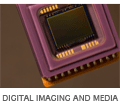

 Apple was the company, in 1990, which put the money up for the formation of ARM. Acorn put up the founding staff and the technology. Apple's thinking then was that ARM would power the Newton, which would revolutionise the world. Well we know what happened with the Newton. Looking at it now the main thing that strikes me is how enormous it was. And I can't forget a comment made by a colleague that the handwriting recognition software on the Newton was the most efficient cache-flushing algorithm known to man. But anyway, my point is that Apple had an associate from ARM since the first. And now there is a rumour that Apple has perhaps purchased an architecture licence from ARM, meaning that it can implement its own variant of the microarchitecture. The evidence is sketchy so far:
Apple was the company, in 1990, which put the money up for the formation of ARM. Acorn put up the founding staff and the technology. Apple's thinking then was that ARM would power the Newton, which would revolutionise the world. Well we know what happened with the Newton. Looking at it now the main thing that strikes me is how enormous it was. And I can't forget a comment made by a colleague that the handwriting recognition software on the Newton was the most efficient cache-flushing algorithm known to man. But anyway, my point is that Apple had an associate from ARM since the first. And now there is a rumour that Apple has perhaps purchased an architecture licence from ARM, meaning that it can implement its own variant of the microarchitecture. The evidence is sketchy so far:
[Talking about DEC who implemented StrongARM based on an architectural license] And who was the engineer that had led the Digital Equipment team that developed StrongARM under an architectural license? It was Dan Dobberpuhl, subsequently CEO of Palo Alto Semiconductor Inc. With the recent acquisition of P.A. Semi by Apple, Dobberpuhl has become an Apple employee. And perhaps now, with ARM's disclosure, we are beginning to see why Apple was interested in Dobberpuhl and his capable design team.[The Apple rumour mill is running hard also]. And this is supposedly the motivation:
The Apple iPhone is thought to have as many as five ARM processor cores inside it, but those processor cores are contained in multiple chips from several different chip vendors. Wouldn't that be perfect for rationalizing into a multicore ARM architecture, if Apple chose to go down that route?Certainly there is merit in this - it is what Nokia have done with their communicator, which, believe it or not, used to have a 386 CPU and an ARM. The 386 was for keeping your hand warm. Most Bluetooth and WiFi devices include an ARM core. The iPhone is ARM11-based, not the latest thing but still pretty nifty. Sadly, if Apple do produce an amazing new microarchitecture, it's unlikely we will see it in anything other than an Apple product. On the plus side, as StrongARM vanished, the prize for building a high performance ARM chip, well out in front of the industry, has not been awarded for years.




